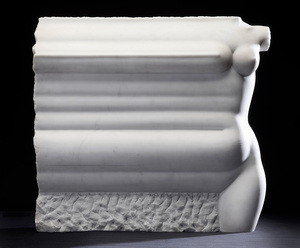Josep Maria Subirachs: classicism and modernity
The great renovator of post-war Catalan sculpture and one of the most outstanding Spanish sculptors of the national scene of the twentieth century, stars in our July 12 auction with one of his iconic Venus.
Josep Maria Subirachs began his sculptural practice under the guidance of Enric Monjo, a sculptor who, together with Frederic Mares, played a very active role in the reconstruction of post-war Barcelona. His training will continue to develop in the workshop of Enric Casanova, whose noucentista influence will deeply influence the young Subirachs, giving birth to his Mediterranean stage. After this first formative stage, the Barcelona-born artist, thanks to the scholarship granted to him in 1950 by the Maillol cercle, will travel to Paris, where he will learn first-hand about the artistic revolutions of the European avant-garde. This stay will be of capital importance in his career, not only because of the discovery of the latest artistic trends, but also because of the opportunity it gave him to make a name for himself as a sculptor.
Since then, his work will go through several phases that will fluctuate between figuration and abstraction, elaborating a solid personal language whose infinite references to his admired Julio Gonzalez, Brancussi, Henry Moore or Giacometti do not detract one iota of personality to a creative essence guided by his innovative spirit but above all by his vindication of art as a generator of life in the face of death and destruction.
Under these constant investigations to which he subjected his work, Subirachs was configuring a plastic universe in which beats a metaphorical and symbolic iconography where each sculpture treasures in itself its own cosmos. However, Subirachs will make certain resources and motifs of representation his workhorse, using them recurrently throughout his career. In this sense, the Venus in bidding encloses several of the concepts that were the backbone of her entire career.
Produced in a decade marked by the need to endow his work with more communicative elements, Subirachs opted for a new figuration whose true objective would lie, more than in its representation, in its significance. In this case, and as usually happens in his work, Subirachs resorts to the female figure in its mythological aspect. Through the body of the Goddess Venus, the inescapable imprint of an artist who, born under the sign of noucentisme, will embrace the classical Greco-Roman culture as an antidote to what he considers a civilization in decadence.
On the other hand, Subirachs will introduce through his sculptures a dialogue between dual concepts, such as space and time, light and shadows, man and woman or vertical and horizontal, reflecting the opposing or complementary dialectic that governs the world in which we live. In this sense, the marble sculpture that we present here contrasts verticality and horizontality, as well as the concept of space-time through a resource that will be fundamental in his work from then on: the so-called running profiles, from which the torso blurs until it fades away, forming large moldings. In fact, this type of resource also allows a double reading of opposite interpretations. On the one hand, it can be read as the raw material that progressively polishes and takes shape until it reaches the final perfection to which art aspires or, on the other hand, as the reflection of the destruction of that beauty and perfection caused by the decadence of culture.






